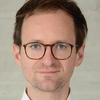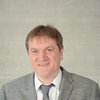Overview
CircularGreenSimCity pursues a holistic approach in the context of future-oriented urban development. In cooperation with Technical University of Munich, the practical partner Drees & Sommer and the municipalities of Würzburg and Asperg, research focuses on what constitutes multidimensional "optimal" urban districts. Life-cycle-based approaches are considered, particularly in the sector of building materials, and the dimensions of water, electricity, heating and cooling consumption, urban green, mobility and socio-economic factors, as well as the interactions between these dimensions.
Research question
The analysis of innovative urban district projects, both existing and new construction, allows to answer the following questions:
- What are the most important dimensions for assessing the sustainability of different urban district archetypes?
- What scores on these dimensions occur in best practice projects – and how do these scores differ between archetypes, existing and new construction and funded vs. non-funded?
- How do the dimensions considered interact?
- How can existing planning practices be optimized for the realization of optimal sustainable urban districts?
Scientific approach and methods
The first step is to derive district archetypes and the most "optimal" possible configurations along multiple dimensions from project analyses. This process is accompanied by preliminary work by the German Sustainable Building Council (DGNB) and by expert workshops with other municipalities such as Copenhagen. The resulting multidimensional, quantitative assessment methods are then applied to existing case studies of the partner municipalities and are implemented in the municipalities' planning processes. In order to be able to identify and evaluate the interactions and synergies shown, the methods developed will also be integrated into the SimStadt tool developed at HFT and the urbi+ tool used at the Chair for Energy Efficient and Sustainable Design and Building at TUM. Both tools will be (further) devoloped to provide the necessary functionalities for a holistic approach.
Targeted results
The project contributes to the scientific discourse on multidimensional district design along archetypes. In addition to the further development of supporting analysis tools, a main goal of the project is the development of practical guidelines for the planning processes tested with the partner municipalities. These should enable municipalities, project developers, engineering firms and energy suppliers to plan optimal sustainable districts in the future.
| Management | Prof. Dr. Bastian Schröter, Prof. Dr. Volker Coors |
| Partners | Technical University of Munich (TUM), Drees & Sommer, City of Würzburg, City of Asperg |
| circulargreensimcity@hft-stuttgart.de | |
| Grant No. | 03EN3050A |
| Funding | Federal Ministry for Economic Affairs and Energy (BMWE) |
| Programme | 7. Energieforschungsprogramm, EnEff:Stadt |
| Call | Buildings and quarters |
| Duration | 01.04.2022 - 31.03.2025 extended until 30.09.2025 |
| Name & Position | E-Mail & Telephone | ||
|---|---|---|---|
 | Professor | +49 711 8926 2371 | 7/028 |
 | Vice-President Research and Digitization | +49 711 8926 2663 | 1/121 |
 | Academic staff member | +49 711 8926 2784 | 7/106 |
 | Academic staff member | +49 711 8926 2474 | 7/010 |
 | Researcher | +49 711 8926 2320 | 2/344 |
![[Image: Jürgen Pollak] Aerial view of the HFT Stuttgart](/fileadmin/Dateien/Hochschule/_processed_/9/1/csm_-_R_Juergen_Pollak_HFT_18.04.18-0040_c66d5992f7.jpg)
![[Image: HFT Stuttgart]](/fileadmin/Dateien/Forschung/Projekte/CircularGreenCity_logo_RGB.jpg)
![BMWE_gefoerdert_englisch_Zusatz_German_Bundestag_CMYK_Energieforschung_Ind-Supply [Image: BMWE] Logo: Supported by: Federal Ministry for Economic Affairs and Energy (BMWE) on the basis of a decision by the German Bundestag](/fileadmin/Dateien/Forschung/Projekte/Foerdererlogos/BMWE_gefoerdert_en_Zusatz_Bundestag_CMYK_Energieforschung_Ind-Supply.jpg)